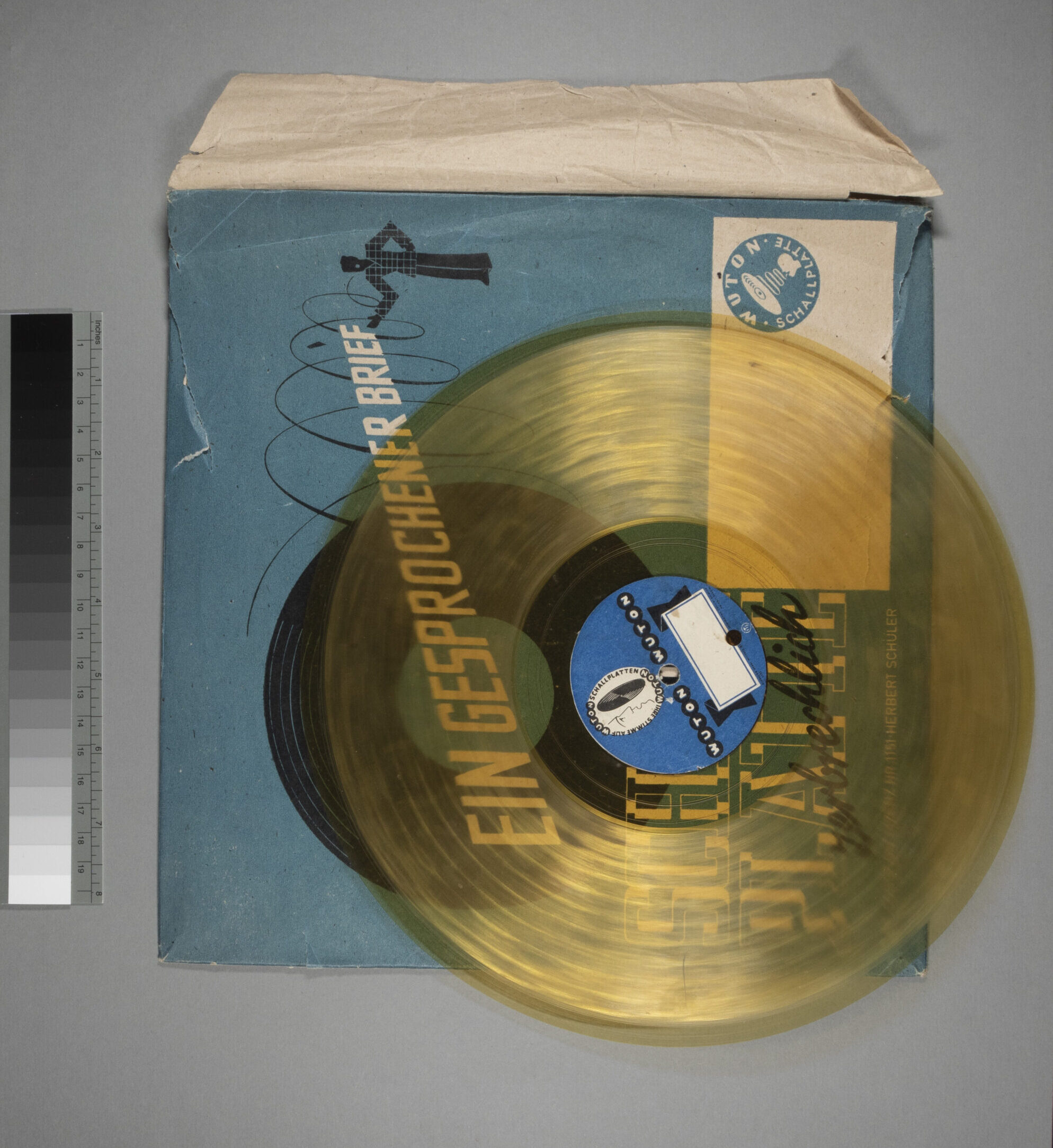Material hören
Katrin Abromeit, Johann Hinterstoisser (2024): Close Listening – “Material hören”
Postsparkasse, Vienna
January 16, 2024
Analysing the materials of the direct cut discs lead us to the question, if certain materials have their characteristic sound fingerprint. Would it be possible to deduct the material from listening to the audio file?
At the Close Listening Session on January 16th with guests from Phonogrammarchiv, Österreichische Mediathek and University of Applied Arts, we presented pictures and sound files of 18 discs made from metal, gelatine, cardboard/gelatine, polyvinyl chloride (PVC) and cellulose nitrate (CN) on cardboard, metal or glass with a little quiz afterwards. It turned out that although the noise patterns were varied, they were not unique for one class of material. PVC discs and CN-coated discs have the potential to provide very clear recordings, but this was not always the case. The technical recording conditions have a major influence, such as electrical recordings compared to acoustic recordings. This was illustrated with the recordings of two Voice-o-Graph discs. The mains hum caused by the tram line next to the recording machine was audible in their audio signals.
The discussion about materialities revealed the troubles to talk about sound and the difficulties of finding names for what you have heard (e.g. describing noise, scratching, ringing, grinding). Above that it became clear that the historical listening experience was dependent on the playback device, that produced its own sounds.

